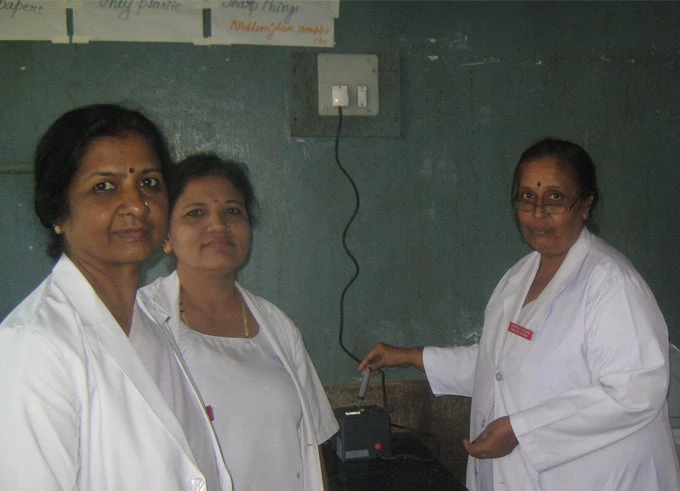What happens when infected needles, syringes, plasters, surgical gloves and intravenous sets are disposed of carelessly? Well, for a start, they spread hepatitis and HIV, not only among the poor rag-pickers who unsuspectingly handle them, but also infect all the waste around, multiplying the hazard manifold. Then, when the waste is not properly incinerated, it causes further damage, polluting the very air we breathe. Liquids wastes are particularly harmful; they can leach into the soil and contaminate the water supply, with often devastating consequences.
Yet it is heartening to see how a few dedicated individuals can make a difference.

Today, it is thanks to champions such as these - including a doctor in charge of a village primary health center and a staff nurse working in a community health center in the rural areas - that India’s southern state of Karnataka has notched up many firsts in the field. Karnataka, home to some 61 million people, has now become the first state in India where:
- All government health facilities – from large public hospitals to small village health centers – segregate their biomedical waste completely.
- All liquid biomedical waste at these facilities is disposed of through proper disinfection units.
- All public hospitals have stopped the burning of biomedical waste on their premises. Instead, private sector agencies now collect their waste and take it to common treatment facilities where it is incinerated at high temperatures.
- All public hospitals have become mercury-free.
- To sustain the good work, the state continues to grade all its public health facilities on their performance.
Rising up to the challenge
With over 9,000 hospitals and more than 60,000 beds in the public health system, meeting the court’s directive was an enormous task. However, by 2014 - within five years - the state had managed to do so.
With the help of the World Bank funded Karnataka Health Systems Development and Reforms Project (KHSDRP), simple units for the safe disinfection of liquid waste and the deep burial of solid waste were designed. These units were especially designed by experts to suit local conditions, were cheap and easy to build, had the approval of the state’s pollution control board, and were adopted by all the state’s health facilities.
In addition, more than 12,000 staff were trained in the correct disposal of waste and, in each district, an officer was appointed to follow up and grade all public health centers on their performance. This ranking helped trigger healthy competition between government health facilities, and they vied with each other to comply with the norms.
However, it took the enterprise and dedication of a few health care professionals who were fully committed to the environment to really spur the movement on.
At a village health center, Dr. Chandrasekhar becomes the first to disinfect liquid waste
In 2010, within six weeks of the designs being circulated, Dr. Chandrasekhar, who was then in charge of a village primary health center (PHC) built a unit to disinfect liquid waste, and dug a proper pit to bury solid waste. Thus, the PHC in little-known Tikota village in Karnataka’s Bijapur district became the first in Karnataka to fully comply with the prescribed system. Tikota’s example soon inspired others and, within a few years’ time - by 2013 - all PHCs in the state had fully functioning systems for the proper disposal of biomedical waste.
Staff nurse Sakamma champions segregation of waste
At the Kushalnagar community health center (CHC) in the state’s Kodagu district, staff nurse Sakamma was inspired by a training program and soon become a spirited votary of segregation. Faced with a shortage of color-coded bins, Sakamma devised an ingenious plan of covering existing bins with yellow and red paper. Since this was not enough, she took frequent rounds to make sure that the bins were regularly used, especially in the wards and the labor room. Slowly and steadily her efforts bore fruit and, by 2012, all the waste in the CHC was segregated. Although Sakamma sadly passed away in 2015, she is still remembered today as the foremost champion for the segregation of biomedical waste at Karnataka’s public health facilities.

Karnataka can now show the way forward to other states. But for this, it will need to ensure that all the gains it has made during these years are sustained over the long term.


Join the Conversation